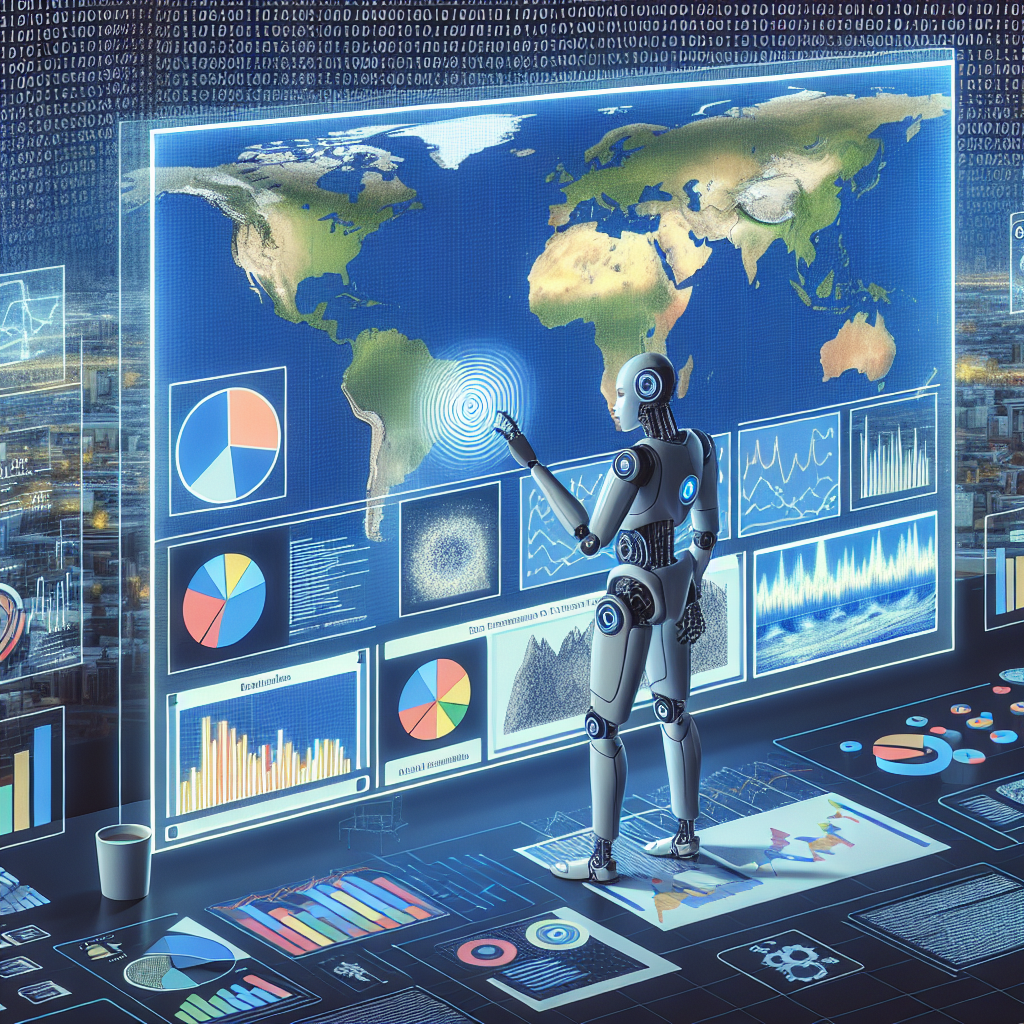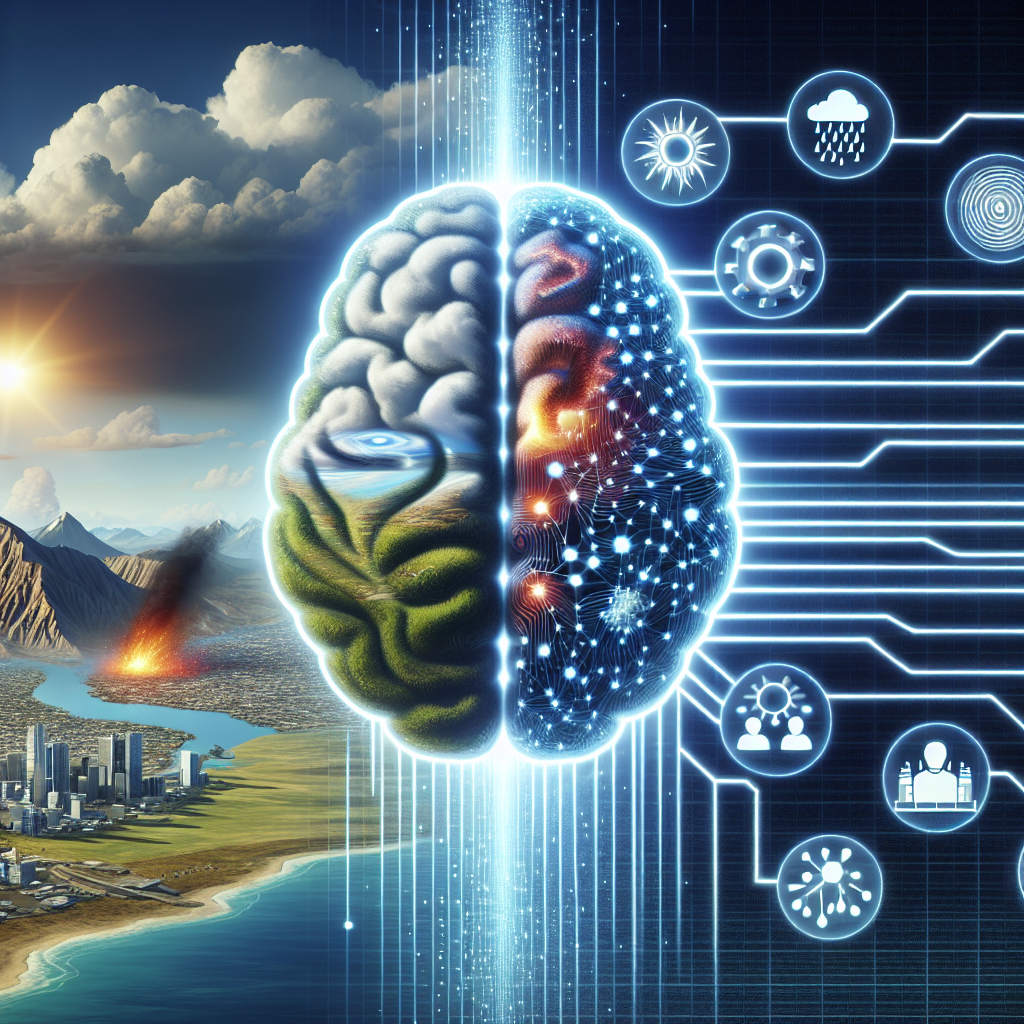In the realm of emergency preparedness, nothing is left to chance. We are stepping into a new era where technology, particularly Artificial Intelligence (AI), is reshaping our approach to prepping. Our article, “AI Predictions For Prepping: Data-Driven Readiness”, maps out how AI is revolutionizing the future of disaster readiness by turning bytes and bits of data into actionable instructions. We also shed light on how these predictions can help us make smarter, more effective decisions to safeguard the people and places that matter most to us.
The Role of AI in Prepping
Definition of prepping
Prepping, short for disaster preparedness, is an activity or set of measures undertaken in anticipation of potential emergencies or disasters. It involves having a plan, stocking up on essential supplies, and acquiring the skills necessary to survive when unexpected events strike. the main goal of prepping is to ensure we can take care of ourselves and our families under various adverse conditions.
Why prepping is important
The importance of prepping cannot be overstated. We live in an unpredictable world where natural disasters, outbreaks of infectious diseases, economic downturns, or even civil unrest can happen without warning. Being unprepared can leave us exposed to danger, hence the importance of prepping. Prepping not only equips us to handle emergencies but also reduces panic, anxiety, and the feeling of being overwhelmed when disaster strikes.
Introduction to AI in prepping
Artificial Intelligence (AI) is revolutionizing the practice of prepping. With its ability to learn from and make sense of massive amounts of data, AI offers unique benefits. Considering its capabilities in predictive analytics, automation, and optimization, AI has the potential to significantly enhance the effectiveness of our prepping efforts. Examples range from predicting natural disasters to optimizing supply chain logistics during crisis situations.
Leveraging Data in Prepping
Importance of data in prepping
Data is a crucial component of prepping. We need accurate, timely, and relevant information to prepare effectively for emergencies. Data informs our choices about which supplies to stockpile, the skills we need to acquire, the best locations to hunker down in, and how to respond when disaster hits.
Types of data used in prepping
Various types of data are used in prepping including weather data, geographic data, demographic data, health data, and economic data, among others. Each type of data serves a specific purpose in preparing us for different disaster scenarios.
Data collection methods in prepping
We collect data for prepping in several ways. These can range from monitoring weather patterns and seismic activity to tracking economic indicators and disease outbreaks. In some cases, we also pay close attention to social phenomena, political activities or military movements that could lead to civil unrest.

Machine learning models for prepping
Machine learning models can help us make sense of all the data we collect. These models can identify patterns and trends that would be difficult, if not impossible, for us to spot on our own. For example, they could help us predict when and where the next big earthquake may occur or identify which locations are most at risk during hurricane season.
Deep learning models for prepping
Deep learning is a subset of machine learning that uses neural networks to model complex patterns in data. In the context of prepping, deep learning models can perform tasks such as image recognition to detect signs of natural disasters from satellite images or analyze social media trends to anticipate public reactions during emergencies.
Reinforcement learning models for prepping
Reinforcement learning is another type of machine learning where an agent learns how to behave in an environment by performing actions and receiving rewards in return. In the prepping context, reinforcement learning models can help us optimize decisions in survival situations or find the most efficient routes for evacuation.
AI Predictions for Disaster Management
Predicting natural disasters
One of the key applications of AI in prepping is for predicting natural disasters. Machine learning algorithms can analyze vast amounts of meteorological and geological data to offer predictions about potential natural disasters like hurricanes, wildfires, earthquakes, and floods. These predictions can provide us increased lead time, thereby allowing for more effective disaster preparation and potentially saving lives.
Early warning systems
Early warning systems equipped with AI capabilities can alert us to impending disasters in real-time. These systems can analyze continuous streams of real-time data to identify signs of potential disasters. With AI’s ability to interpret large sets of data quickly, such systems can provide accurate early warnings that are crucial for effective disaster management.
Optimizing resource allocation during disasters
During disasters, resources like food, water, medical supplies, and rescue teams can be scarce. AI can help optimize the allocation of these resources, ensuring they reach the people who need them most. Machine learning algorithms can predict which areas will likely need the most aid, helping to prioritize and streamline aid distribution.

AI Predictions for Emergency Response
Real-time risk assessment
AI can help us assess risks in real-time during emergencies. By analyzing a multitude of factors like the severity of an event, population density, and available resources, AI can provide insights into where the need is greatest and what actions should be taken to mitigate the impact of the disaster.
Automated emergency services dispatching
AI can also automate the dispatching of emergency services. By using AI to analyze emergency calls, cities can deploy firefighters, police, and paramedics more quickly and efficiently, improving response times and potentially saving lives.
Tracking and predicting the spread of diseases
During a pandemic, AI can be used to track and predict the spread of diseases. Machine learning models can analyze vast amounts of health data to predict the spread of infectious diseases and inform public health responses. This enables us to prepare and manage resources accordingly.
AI Predictions for Survival Skills
Identifying and prioritizing necessary skills
Depending on the nature of the disaster, certain survival skills may be more important than others. AI can help identify and prioritize these skills based on different disaster scenarios. For instance, in a wildfire, skills related to fireproofing homes could be prioritized, while flooding might necessitate skills related to floodwater navigation and safety.
Training and simulation using AI
AI can also be used for training and simulation purposes. AI-powered virtual reality can provide immersive training experiences that mimic real disaster scenarios, allowing us to practice our survival skills in a safe and controlled environment.
Optimizing decision-making in survival situations
Survival situations often require difficult and immediate decisions. Fortunately, AI can assist with this by analyzing potential options and predicting their outcomes based on available data. This can help us make the best decisions and take the most effective actions in survival scenarios.
AI Predictions for Supply Chain Management
Optimizing supply chain logistics
During a disaster, maintaining an efficient supply chain is critical. AI can optimize supply chain logistics, ensuring resources are transported and delivered more efficiently. This could involve routing shipments to avoid areas impacted by disasters or optimizing the scheduling of deliveries to ensure resources are available when and where they’re needed most.
Predictive inventory management
AI can also provide predictive inventory management. By analyzing purchasing behaviors and trends, AI can predict when certain items may run out, allowing for restocking before a shortage occurs.
Monitoring and addressing supply chain disruptions
AI helps in monitoring for potential disruptions in the supply chain and can make proactive adjustments to prevent or minimize their impact. For instance, event prediction models can forecast labor strikes, port closures, or severe weather events that may disrupt the supply chain.
AI Predictions for Food Security
Crop yield prediction
AI can also help secure our food supplies. For instance, machine learning models can predict crop yields based on factors such as weather, soil suitability, and crop type. This helps farmers plan their production and us ensure adequate food supplies during emergencies.
Disease and pest detection in agriculture
AI can identify diseases and pests affecting crops, allowing for prompt and precise action to prevent widespread damage. Image recognition algorithms can analyze plant images to detect signs of disease or pests, helping to protect our food sources.
Implementing sustainable farming practices
AI can recommend sustainable farming practices that mitigate environmental impact and ensure long-term food security. These could include precision farming techniques that conserve resources or alternative farming methods that yield more food with less impact on the environment.
AI Predictions for Communication Systems
Developing resilient communication networks
AI plays a vital role in creating communication systems that are resilient to disasters. By predicting potential system disruptions and suggesting optimal routing of communications, AI can ensure that our lines of communication remain open even during major emergencies.
Real-time translation and transcription
In global disaster scenarios, AI can provide real-time translation and transcription services. This helps ensure that crucial information is accessible to everyone, regardless of language barriers.
Enhancing emergency communication channels
AI can also enhance emergency communication channels. Whether through the development of intelligent messaging systems that can deliver targeted alerts to at-risk populations or systems that can filter out non-emergency chatter to ensure critical messages get through, AI can ensure essential communication during emergencies.
Ethical Considerations in AI Prepping
Privacy concerns with data collection
While AI prepping can provide numerous benefits, there are also important ethical considerations. One of these is privacy. To be effective, AI prepping requires the collection and analysis of huge amounts of data, which could infringe on individual privacy rights.
Equitable distribution of AI resources
Another concern is the equitable distribution of AI resources. Not everyone has access to the same level of AI technology, and we must ensure that those with less access do not get left behind in our AI-driven prepping efforts.
Addressing bias and discrimination in AI systems
Finally, there’s the challenge of addressing bias and discrimination in AI systems. Just like humans, AI can also be biased, especially if the data it was trained on was biased. This can lead to discriminatory outcomes, which we need to be aware of and actively mitigate.
In conclusion, incorporating AI into our prepping efforts can provide numerous benefits. From predicting potential disasters to optimizing resource allocation and developing key survival skills, AI offers a data-driven approach to readiness. However, we must also be mindful of the ethical considerations of using such technology, particularly issues of privacy, equitable access, and bias. Nevertheless, with these considerations in mind, AI-driven prepping has the potential to significantly enhance our preparedness for whatever the future holds.
